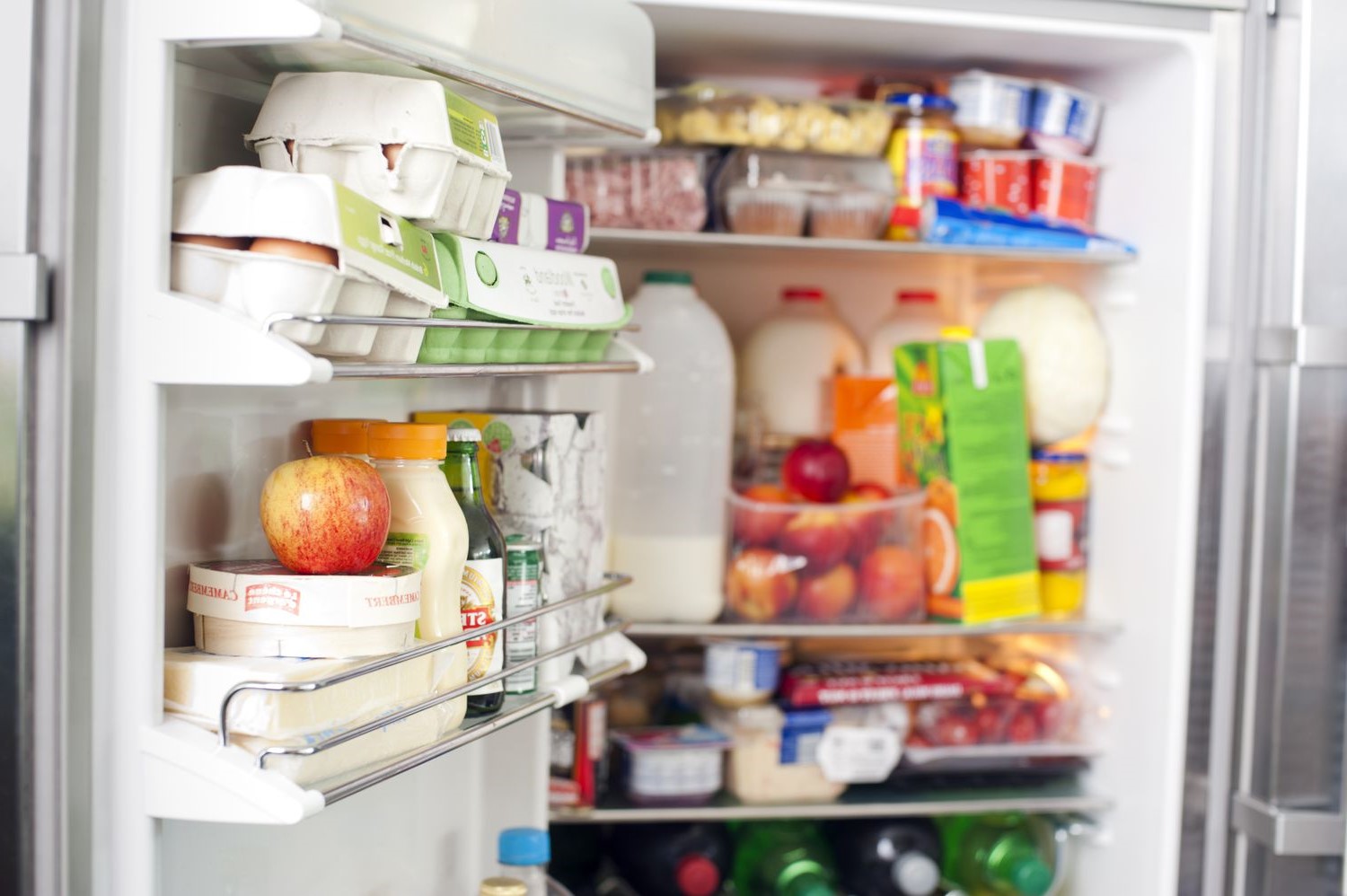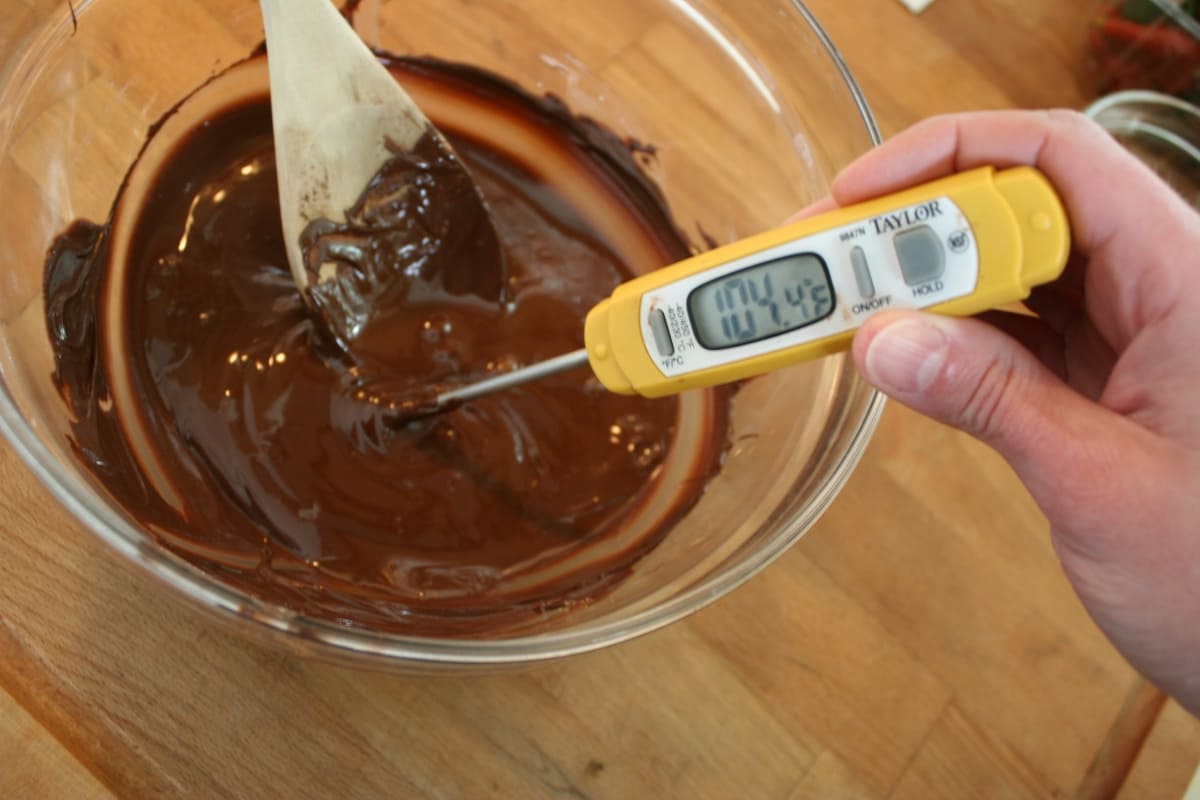Home>Culinary & Beverages>The Impact Of Refrigeration Temperatures On Microbial Growth In Food


Culinary & Beverages
The Impact Of Refrigeration Temperatures On Microbial Growth In Food
Published: March 3, 2024
Discover how refrigeration temperatures affect microbial growth in culinary & beverages. Learn how to maintain food safety and quality.
(Many of the links in this article redirect to a specific reviewed product. Your purchase of these products through affiliate links helps to generate commission for Temperatures.com, at no extra cost. Learn more)
Table of Contents
Introduction
Refrigeration is a cornerstone of modern food preservation, playing a pivotal role in maintaining the safety and quality of perishable items. The impact of refrigeration temperatures on microbial growth in food is a critical aspect of food safety and public health. Understanding how temperature influences the proliferation of microorganisms is essential for ensuring that food remains safe for consumption.
Microbial growth in food is a natural process that occurs when microorganisms such as bacteria, yeast, and mold find favorable conditions for reproduction. These microorganisms can thrive in various food products, posing a potential risk to human health if consumed in large quantities. Therefore, controlling microbial growth is imperative to prevent foodborne illnesses and spoilage.
Refrigeration temperatures directly influence the rate at which microorganisms multiply in food. By maintaining low temperatures, refrigeration inhibits the growth of most microorganisms, thereby extending the shelf life of perishable items. However, fluctuations in refrigeration temperatures or improper storage practices can compromise the effectiveness of refrigeration in controlling microbial growth.
In this article, we will delve into the intricate relationship between refrigeration temperatures and microbial growth in food. By exploring the factors that influence microbial proliferation, the impact of temperature on different types of microorganisms, and best practices for refrigeration temperatures in food storage, we aim to provide valuable insights into the crucial role of temperature control in preserving food safety and quality.
Understanding the dynamics of microbial growth in refrigerated food is essential for both consumers and food industry professionals. By gaining knowledge about the impact of refrigeration temperatures on microbial proliferation, individuals can make informed decisions regarding food storage and handling, ultimately contributing to the prevention of foodborne illnesses and the reduction of food waste.
In the subsequent sections, we will unravel the complexities of microbial growth in refrigerated food and shed light on the significance of maintaining optimal refrigeration temperatures to safeguard public health and promote food security.
Understanding Microbial Growth in Food
Microbial growth in food is a natural and inevitable process that occurs when favorable conditions are present for microorganisms to thrive. These microorganisms, including bacteria, yeast, and mold, have the ability to proliferate rapidly in various food products, posing potential health risks if consumed in large quantities. Understanding the factors that contribute to microbial growth is crucial for ensuring food safety and preventing foodborne illnesses.
The growth of microorganisms in food is influenced by several key factors, including temperature, moisture, pH levels, and the availability of nutrients. When these conditions are conducive to microbial proliferation, the microorganisms can multiply at a rapid rate, leading to food spoilage and potential health hazards. Therefore, controlling these factors is essential for inhibiting microbial growth and preserving the safety and quality of food products.
Temperature plays a significant role in regulating microbial growth in food. Microorganisms have specific temperature ranges at which they thrive, and their growth rates can vary considerably based on temperature conditions. For example, psychrophilic microorganisms, which thrive in cold temperatures, can proliferate in refrigerated food if the temperature is not sufficiently low to inhibit their growth. On the other hand, mesophilic and thermophilic microorganisms have optimal growth ranges at higher temperatures, making them a concern in food products that are stored or processed under mild heat conditions.
In addition to temperature, moisture levels in food also impact microbial growth. High moisture content creates an environment conducive to microbial proliferation, particularly for bacteria and mold. Furthermore, the pH levels of food can influence microbial growth, as certain microorganisms thrive in acidic environments, while others prefer neutral or alkaline conditions. The availability of nutrients, such as proteins, carbohydrates, and fats, also plays a crucial role in supporting microbial growth in food.
By comprehensively understanding the factors that contribute to microbial growth in food, individuals can implement effective strategies to control and mitigate the risks associated with microbial proliferation. This knowledge empowers food industry professionals, consumers, and regulatory authorities to make informed decisions regarding food storage, handling, and processing, ultimately contributing to the prevention of foodborne illnesses and the preservation of food safety and quality.
In the subsequent sections, we will delve deeper into the significance of refrigeration temperatures in controlling microbial growth, exploring the impact of temperature on different types of microorganisms and best practices for maintaining optimal refrigeration conditions in food storage. This exploration will provide valuable insights into the critical role of temperature control in safeguarding public health and promoting food security.
The Importance of Refrigeration Temperatures
Refrigeration temperatures play a pivotal role in preserving the safety, quality, and shelf life of perishable food items. By maintaining low temperatures, refrigeration inhibits the growth of most microorganisms, thereby slowing down the processes of spoilage and foodborne illness. The significance of refrigeration temperatures lies in their ability to create an inhospitable environment for microbial proliferation, effectively extending the freshness and edibility of various food products.
When perishable foods are exposed to higher temperatures, microorganisms can multiply at accelerated rates, leading to the deterioration of food quality and an increased risk of foodborne illnesses. Refrigeration serves as a critical barrier against microbial growth, providing a controlled environment that hinders the proliferation of bacteria, yeast, and mold. This is particularly crucial for foods such as dairy products, meats, poultry, seafood, and fresh produce, which are highly susceptible to microbial contamination and spoilage.
Moreover, refrigeration temperatures contribute to the preservation of nutritional value in perishable foods. By slowing down enzymatic reactions and microbial activity, low temperatures help retain essential nutrients, vitamins, and flavors in food products. This not only ensures that consumers receive the maximum nutritional benefits from their food but also minimizes food waste by extending the usable lifespan of perishable items.
In the food industry, adherence to specific refrigeration temperatures is a fundamental aspect of food safety regulations and quality control measures. Food establishments, including restaurants, grocery stores, and food processing facilities, are required to maintain precise refrigeration temperatures to uphold the safety and integrity of their products. Failure to comply with these temperature guidelines can result in compromised food quality, increased health risks, and regulatory non-compliance.
Furthermore, for consumers, understanding the importance of refrigeration temperatures is essential for proper food storage and handling practices. By maintaining refrigerators and freezers at the recommended temperatures, individuals can minimize the risk of food spoilage and contamination, ultimately safeguarding their health and well-being. Additionally, awareness of the impact of refrigeration temperatures empowers consumers to make informed purchasing decisions and to exercise vigilance when storing perishable foods at home.
In essence, the importance of refrigeration temperatures cannot be overstated in the realm of food safety and quality. By creating an environment that inhibits microbial growth, preserves nutritional value, and upholds regulatory standards, refrigeration temperatures serve as a cornerstone of modern food preservation, contributing to the overall well-being of consumers and the sustainability of the food supply chain.
Factors Affecting Microbial Growth in Refrigerated Food
Several factors influence the growth of microorganisms in refrigerated food, ultimately impacting the safety and quality of perishable items. Understanding these factors is crucial for implementing effective strategies to control microbial proliferation and mitigate the risks associated with foodborne illnesses and spoilage.
-
Temperature: Refrigeration temperatures directly affect microbial growth in food. While low temperatures inhibit the proliferation of most microorganisms, fluctuations in temperature or improper refrigeration practices can compromise the effectiveness of refrigeration. Additionally, psychrophilic microorganisms, which thrive in cold environments, can still proliferate in refrigerated food if the temperature is not sufficiently low to inhibit their growth.
-
Moisture Levels: High moisture content in refrigerated food creates an environment conducive to microbial proliferation, particularly for bacteria and mold. Proper packaging and storage practices are essential for controlling moisture levels and preventing the formation of condensation, which can promote microbial growth.
-
pH Levels: The acidity or alkalinity of refrigerated food can impact microbial growth. Certain microorganisms thrive in acidic environments, while others prefer neutral or alkaline conditions. Monitoring and controlling the pH levels of food products is crucial for inhibiting the growth of specific microorganisms.
-
Nutrient Availability: The availability of nutrients, such as proteins, carbohydrates, and fats, in refrigerated food can support microbial growth. Proper storage and handling practices, including minimizing exposure to air and maintaining hygienic conditions, are essential for controlling the availability of nutrients and inhibiting microbial proliferation.
-
Cross-Contamination: Cross-contamination, where microorganisms from one food item are transferred to another, can occur in refrigerated environments. Proper storage practices, including the segregation of raw and cooked foods, as well as the use of sealed containers, are essential for preventing cross-contamination and minimizing the risk of microbial growth.
By addressing these factors and implementing stringent food safety practices, individuals can effectively control microbial growth in refrigerated food, ultimately ensuring the safety, quality, and integrity of perishable items. Maintaining optimal refrigeration temperatures and adhering to proper storage and handling protocols are essential for mitigating the risks associated with microbial proliferation and promoting food safety.
The Impact of Temperature on Different Types of Microorganisms
The impact of temperature on microbial growth varies significantly among different types of microorganisms, including bacteria, yeast, and mold. Understanding these temperature dependencies is crucial for implementing effective refrigeration practices to inhibit the proliferation of specific microorganisms in food.
Bacteria exhibit diverse temperature preferences, with distinct categories based on their optimal growth ranges. Psychrophilic bacteria, also known as cold-loving bacteria, thrive in low-temperature environments, such as refrigerated food storage. These microorganisms have an optimal growth range of 0°C to 20°C (32°F to 68°F) and can proliferate in refrigerated food if the temperature is not sufficiently low to inhibit their growth. Mesophilic bacteria, which prefer moderate temperatures, have an optimal growth range of 20°C to 45°C (68°F to 113°F) and are commonly associated with food spoilage when refrigeration temperatures are not maintained within the recommended range. Thermophilic bacteria, on the other hand, thrive in higher temperatures, with an optimal growth range of 45°C to 70°C (113°F to 158°F). While these bacteria are not typically a concern in refrigerated food, their temperature preferences are relevant to food processing and cooking practices.
Yeast, a type of fungus, also exhibits distinct temperature requirements for growth. While some yeast strains can thrive in refrigerated environments, the optimal growth range for most yeast species falls between 20°C to 30°C (68°F to 86°F). However, certain yeast strains, such as those used in baking and brewing, have specific temperature preferences for fermentation and leavening processes, highlighting the importance of temperature control in food production and preservation.
Mold, another type of fungus, is known for its ability to proliferate in various temperature conditions. While some molds can grow at refrigeration temperatures, the optimal growth range for many mold species is between 20°C to 30°C (68°F to 86°F). However, certain molds can thrive in colder environments, posing a risk to refrigerated food items if temperature control is inadequate.
By understanding the temperature preferences of different microorganisms, individuals can implement targeted refrigeration practices to inhibit the growth of specific bacteria, yeast, and mold in food. Maintaining precise refrigeration temperatures within the recommended range is essential for creating an inhospitable environment for microbial proliferation, ultimately safeguarding the safety and quality of perishable food items.
In essence, the impact of temperature on different types of microorganisms underscores the critical role of refrigeration in controlling microbial growth and preserving food safety. By aligning refrigeration practices with the temperature requirements of specific microorganisms, individuals can effectively mitigate the risks associated with foodborne illnesses and spoilage, contributing to the overall integrity of the food supply chain.
Read more: How UAH Temperatures Impact Climate Studies
Best Practices for Refrigeration Temperatures in Food Storage
Maintaining optimal refrigeration temperatures is paramount for ensuring the safety and quality of perishable food items. By adhering to best practices for refrigeration temperatures in food storage, individuals can effectively inhibit microbial growth, minimize the risk of foodborne illnesses, and prolong the shelf life of refrigerated products.
-
Refrigerator Temperature Settings: Set the refrigerator temperature to 40°F (4°C) or below to inhibit the growth of most bacteria, yeast, and mold. Freezers should be maintained at 0°F (-18°C) or lower to preserve the quality of frozen foods.
-
Temperature Monitoring: Use a refrigerator thermometer to regularly monitor the internal temperature of the refrigerator and freezer. This ensures that the appliances are operating within the recommended temperature ranges.
-
Proper Storage Organization: Store perishable items, such as dairy products, meats, poultry, seafood, and fresh produce, in designated refrigerator compartments to prevent cross-contamination and maintain optimal temperature conditions.
-
Sealed Containers and Wrapping: Use airtight containers or sealed wrapping to store leftovers and perishable items in the refrigerator. This helps prevent moisture loss and minimizes exposure to air, thereby preserving the freshness of the food.
-
Thawing Practices: When thawing frozen foods, utilize safe methods such as thawing in the refrigerator or using cold water. Avoid thawing at room temperature, as this can create an environment conducive to microbial growth.
-
Regular Cleaning and Maintenance: Keep the refrigerator and freezer clean and well-maintained to prevent the buildup of mold, bacteria, and food residues. Regularly discard expired or spoiled items to maintain hygienic storage conditions.
-
Temperature-Sensitive Foods: Be mindful of temperature-sensitive foods, such as dairy products and raw meats, and promptly return them to refrigeration after use. Avoid leaving perishable items at room temperature for extended periods.
-
Storage Duration: Adhere to recommended storage durations for various food items. Discard perishable items that have exceeded their recommended storage timelines to minimize the risk of spoilage and foodborne illnesses.
By implementing these best practices for refrigeration temperatures in food storage, individuals can uphold the safety and quality of refrigerated products, mitigate the risks associated with microbial proliferation, and contribute to the prevention of foodborne illnesses. Additionally, awareness of proper refrigeration practices empowers consumers to make informed decisions regarding food storage and handling, ultimately promoting food safety and reducing food waste.
Conclusion
In conclusion, the impact of refrigeration temperatures on microbial growth in food is a critical consideration for ensuring food safety, preserving quality, and minimizing the risk of foodborne illnesses. The intricate relationship between temperature control and microbial proliferation underscores the importance of maintaining optimal refrigeration conditions in both commercial and domestic food storage settings.
By understanding the factors that influence microbial growth, including temperature, moisture levels, pH, nutrient availability, and cross-contamination, individuals can implement targeted strategies to inhibit the proliferation of bacteria, yeast, and mold in refrigerated food. The significance of refrigeration temperatures lies in their ability to create an inhospitable environment for microbial proliferation, ultimately extending the shelf life of perishable items and minimizing the risk of food spoilage.
Furthermore, the impact of temperature on different types of microorganisms highlights the need for precise temperature control to align with the temperature preferences of specific bacteria, yeast, and mold. By adhering to recommended refrigeration temperatures and implementing best practices for food storage, individuals can effectively mitigate the risks associated with microbial growth, contributing to the overall integrity of the food supply chain.
The best practices for refrigeration temperatures in food storage, including temperature monitoring, proper storage organization, the use of sealed containers, safe thawing practices, regular cleaning and maintenance, and adherence to storage durations, serve as essential guidelines for upholding food safety and quality. These practices empower consumers to make informed decisions regarding food storage and handling, ultimately promoting food safety and reducing food waste.
In essence, the impact of refrigeration temperatures on microbial growth in food underscores the critical role of temperature control in preserving the safety and integrity of perishable food items. By prioritizing optimal refrigeration conditions and adhering to best practices for food storage, individuals can contribute to the prevention of foodborne illnesses, the reduction of food waste, and the overall well-being of consumers.
The knowledge and awareness of the impact of refrigeration temperatures on microbial growth serve as valuable tools for both consumers and food industry professionals, enabling informed decision-making and the implementation of effective food safety measures. As we continue to prioritize food safety and quality, the significance of refrigeration temperatures in controlling microbial proliferation remains a cornerstone of modern food preservation, safeguarding public health and promoting the sustainability of the food supply chain.














